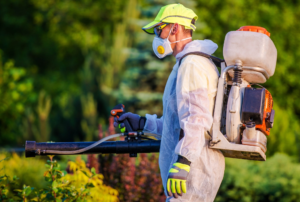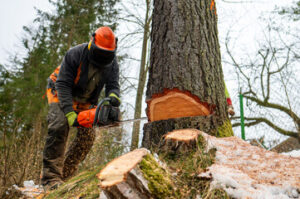Auto Accident Attorney Duluth GA is a legal compass for individuals caught in the storm of a crash. They help navigate the complex realm of insurance policies, interpreting their terms and conditions to leverage maximum compensation.
When building a case, they also consider future medical treatment costs and the emotional impacts of injuries. Their work is done contingently, aligning their interests with the clients’.

Car accidents are among the most common civil tort cases filed today. Despite the advances in car and road safety features, motor vehicle accidents continue to be one of the leading causes of serious injury and death. The most common legal claim in a car accident case is negligence, which involves the failure to use an ordinary degree of care under the circumstances.
Car accident attorneys have years of experience handling this type of case and are familiar with the complexities involved. They know what evidence is necessary to prove each element of a victim’s claim. They also understand how to negotiate with insurance companies and how to present a compelling case in court. They are skilled negotiators who ensure that their clients receive fair compensation.
Oftentimes, victims do not have the time or resources to deal with their claims on their own. They are preoccupied with medical care, dealing with car damage, loss of income from missed work and a myriad of other issues that come up after an accident. A car accident attorney can handle these tasks for them so that they can focus on getting well.
The attorney’s track record, fee structure, resources, reputation and comfort level with the case are all important factors to consider when selecting an auto accident attorney. It is essential to find someone who will put your needs above their own. This might be shown by offering a free case evaluation, being accessible through phone or email and giving testimonials from former clients.
Another important factor is the firm’s size and how many cases they have handled. It is also a good idea to evaluate the entire team, including associates and staff members. This can help you determine who will handle your case and whether or not they are experienced enough to take it to trial.
Lastly, it is important to find out how much settlement experience the attorney has. A good attorney will be able to calculate a victim’s losses, including past and future medical bills, lost wages, property damage and pain and suffering. They will also be able to accurately project future damages, which is vital in ensuring that the victim is compensated for ongoing treatment and long-term disability.
Reputation
The reputation of an auto accident attorney is a critical factor when choosing one to represent you. A lawyer with a good reputation will have a positive track record in achieving results for their clients. They will also have an excellent working relationship with their clients and other attorneys in the legal community. You should be able to find online reviews from previous clients as well as personal recommendations from friends and family.
When you meet with a car accident lawyer, it is important that they are able to clearly communicate their plans for your case and answer all of your questions. A lack of effective communication can lead to confusion and frustration throughout the legal process. It is also important to choose an attorney who will return your calls and emails in a timely manner.
A strong work ethic is another key aspect to look for in a car accident lawyer. A good lawyer will devote a significant amount of time to preparing for each case. This includes studying all of the relevant documents and establishing a strategy for the case. A strong work ethic will also allow the attorney to spend time negotiating with medical professionals and insurance companies in order to get the best possible settlement for their client.
Car accidents can be complex and complicated, which is why you need an attorney with a strong background in the field. A reputable attorney will have extensive knowledge of the state and federal laws that govern motor vehicle accidents. They will be able to use this knowledge to build a compelling case for their client and increase the chances of getting a favorable outcome.
In addition, an experienced car accident attorney will know how to properly evaluate and quantify damages. This is essential for ensuring that you receive full compensation for your losses. Insurers often try to persuade injured parties into accepting low-ball settlements, but a seasoned car accident attorney will be able to stand up for their clients’ rights and fight for the highest possible compensation.
Hiring the right car accident attorney can be a challenging task, but it is well worth the effort. By taking the time to research your options and ask for referrals, you can be sure that you will hire an attorney who is both qualified and dedicated to your case.
Knowledge of the Law
During your search for an attorney, it’s important to find out how familiar they are with the laws and procedures in your state. It can also help to look for information about their judicial connections. This includes whether they participate in local bar associations and contribute to campaigns for elected offices. You can also ask how many cases they have tried and what settlements they have obtained (remember that 95% of personal injury cases settle without trial).
Car accidents often involve complex legal and medical issues. They can include navigating New York’s no-fault insurance system, determining liability, and addressing long-term medical care. A lawyer with the knowledge to handle these intricacies can help you maximize your compensation.
Another factor to consider is how much time an attorney can devote to your case. Many attorneys work on a contingency basis, which means they only get paid when they win a settlement or court decision in your favor. This can free up your time to focus on recovery and allow you to choose an attorney who’s willing to put in the necessary effort to build a strong case.
When building a claim, your lawyer will take into account all of the ways that an accident has affected you – from financial losses due to medical treatment and vehicle repair, to emotional losses such as post-traumatic stress disorder. They can also explain the importance of seeking medical attention after an accident, even if you think your injuries are minor or will heal on their own.
It is common for seemingly minor injuries to worsen, and an experienced attorney can prevent you from being swayed by tactics used by insurance companies to get unrepresented victims to accept far less than they deserve. The right attorney will be able to help you build your claim, negotiate with insurance companies, and get you the compensation that you need to recover.
Negotiation Skills
The ability to negotiate a settlement is a critical skill for any car accident attorney. An effective negotiation strategy involves communication, persuasion and strategic thinking, and it can help ensure that your interests are protected during the settlement process. A car accident lawyer with strong negotiation skills can help you get the compensation you deserve.
In addition, a good car accident lawyer understands the intricacies of insurance policies and how to use them to your advantage during negotiations. They can also identify common tactics used by insurance adjusters to lower offers, ensuring that you receive fair compensation for your losses.
During the negotiations, your car accident attorney will highlight the strengths of your case. They will present evidence, such as medical records and witness statements, that demonstrate liability and establish the extent of your damages. They will also take into account future costs such as additional surgeries and long-term care.
Negotiating with the insurance company can be challenging because the adjusters are trained to protect their employer’s bottom line and will try to lowball you. An experienced car accident attorney will have a firm but professional stance, and they will handle all communications with the insurance adjusters, preventing you from making any statements that could be used against you.
A good car accident attorney will also have the ability to mediate disputes. This can be a faster and more cost-effective way to resolve disputes than taking them to court. If you have a dispute with an insurance company, your car accident attorney can help you reach a mutually beneficial agreement through mediation.
During the settlement process, your car accident attorney will gather information about the at-fault party, such as their likes and dislikes, financial situation, and strengths and weaknesses. This will enable them to frame your demands in a way that is more appealing to the other side. In addition, they will know what types of damages you are entitled to, including current and future medical expenses, lost wages, pain and suffering, and property damage. This information will be invaluable during the negotiations.








